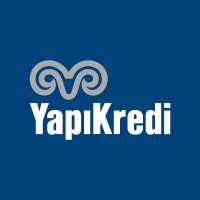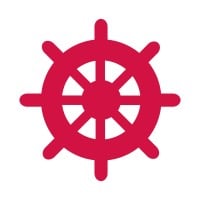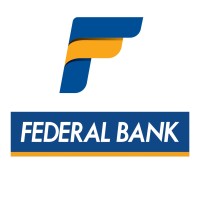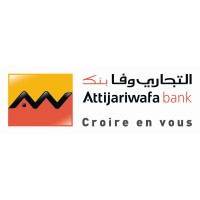Company Details
yapikredi
14,355
338,286
522
yapikredi.com.tr
0
YAP_3311988
In-progress

Yapı Kredi Company CyberSecurity Posture
yapikredi.com.trYapı Kredi has been sustainably strengthening its market positioning in the sector since its establishment in 1944 through a customer-centric approach and focus on innovation. Yapı Kredi is the 3rd largest private bank in Turkey with total assets worth TL 411 billion as of the end of 2019. Constantly seeking to increase its contribution to the financing of the Turkish economy with its customer-centric approach, Yapı Kredi enlarged the volume of its total cash and non-cash loans by 4% in 2019 to TL 319 billion. Thus, Yapı Kredi maintained its position in 2nd place among private banks in this respect. The Bank serves its customers with its 846 branches covering all regions of Turkey and 16,631 employees. Yapı Kredi delivers its products and services via its advanced Alternative Delivery Channels (ADCs) that comprise 4,330 ATMs, innovative internet banking, leading mobile banking, 3 call centers and approximately 709 thousand POS terminals. 94% of the Bank’s transactions went through non-branch channels as at year-end 2019. Yapı Kredi is a fully integrated financial services group supported by its domestic and international subsidiaries. Yapı Kredi serves its customers through retail banking (comprising of individual banking, Small and Medium Size Enterprises (SME) banking and card payment systems, private banking and wealth management), as well as corporate and commercial banking. The Bank’s operations are supported by domestic subsidiaries in asset management, brokerage, leasing and factoring as well as international banking subsidiaries in the Netherlands, Malta and Azerbaijan. Yapı Kredi has a strong shareholding structure which ensures sustainable and profitable growth. 40.95% of the Bank’s shares are owned by Koç Financial Services, 9.02% of the shares are owned by Koç Holding A.Ş. The total direct and indirect shares of Koç Group amount to 49.99%. 20.00% of Bank’s shares are owned by UniCredit S.P.A. The remaining 30.03% is publicly traded on Borsa Istanbul
Company Details
yapikredi
14,355
338,286
522
yapikredi.com.tr
0
YAP_3311988
In-progress
Between 750 and 799

 Yapı Kredi Global Score (TPRM)
Yapı Kredi Global Score (TPRM)XXXX



No incidents recorded for Yapı Kredi in 2025.
No incidents recorded for Yapı Kredi in 2025.
No incidents recorded for Yapı Kredi in 2025.
Yapı Kredi cyber incidents detection timeline including parent company and subsidiaries

Yapı Kredi has been sustainably strengthening its market positioning in the sector since its establishment in 1944 through a customer-centric approach and focus on innovation. Yapı Kredi is the 3rd largest private bank in Turkey with total assets worth TL 411 billion as of the end of 2019. Constantly seeking to increase its contribution to the financing of the Turkish economy with its customer-centric approach, Yapı Kredi enlarged the volume of its total cash and non-cash loans by 4% in 2019 to TL 319 billion. Thus, Yapı Kredi maintained its position in 2nd place among private banks in this respect. The Bank serves its customers with its 846 branches covering all regions of Turkey and 16,631 employees. Yapı Kredi delivers its products and services via its advanced Alternative Delivery Channels (ADCs) that comprise 4,330 ATMs, innovative internet banking, leading mobile banking, 3 call centers and approximately 709 thousand POS terminals. 94% of the Bank’s transactions went through non-branch channels as at year-end 2019. Yapı Kredi is a fully integrated financial services group supported by its domestic and international subsidiaries. Yapı Kredi serves its customers through retail banking (comprising of individual banking, Small and Medium Size Enterprises (SME) banking and card payment systems, private banking and wealth management), as well as corporate and commercial banking. The Bank’s operations are supported by domestic subsidiaries in asset management, brokerage, leasing and factoring as well as international banking subsidiaries in the Netherlands, Malta and Azerbaijan. Yapı Kredi has a strong shareholding structure which ensures sustainable and profitable growth. 40.95% of the Bank’s shares are owned by Koç Financial Services, 9.02% of the shares are owned by Koç Holding A.Ş. The total direct and indirect shares of Koç Group amount to 49.99%. 20.00% of Bank’s shares are owned by UniCredit S.P.A. The remaining 30.03% is publicly traded on Borsa Istanbul


In 1997, DenizBank was acquired by the Zorlu Holding in the form of a banking license from the Privatization Administration. Undergoing three shareholder changes and done public offering in its short history, the Bank was acquired in October 2006 by Dexia, one of the leading financial groups of Euro

Welcome to Bank of India's official LinkedIn page! Join us & stay tuned to learn about our products, exciting offers & latest happenings. Bank of India was founded on 7th September, 1906 by a group of eminent business professionals from Mumbai. The Bank was under private ownership and control till J

For over 200 years, BNP Paribas Fortis has helped drive the growth and prosperity of Belgium’s economy and communities. The mission of our 12,000 colleagues is clear: be the trusted financial partner for four million individual customers, businesses and organisations. We do this by offering advice a

Federal Bank, one of the leading private sector banks with presence across the country, began its journey from humble backgrounds to reach the stature of an institution with national prominence & character. With a rich legacy of 7 decades, the Bank aspires to be the most admired Bank in the country

Desjardins Group is the largest cooperative financial group in North America and the fifth largest cooperative financial group in the world, with assets of $435.8 billion as at March 31, 2024. It was named one of Canada's Best Employers by Forbes magazine and by Mediacorp. To meet the diverse needs

About Kotak Mahindra Group: Established in 1985, the Kotak Mahindra Group is one of India’s leading financial services conglomerates. In February 2003, Kotak Mahindra Finance Ltd. (KMFL), the Group’s flagship company, received a banking license from the Reserve Bank of India (RBI). With this, KMF

With our universal banking model, our pan-African scope, the complementarity of our businesses and our solid expertise, we are a leading player in the Moroccan and African financial sector. For over a century, we’ve been able to adapt by diversifying our business lines, renewing our offers and rev
Widely known for customer centricity, Canara Bank was founded by Shri Ammembal Subba Rao Pai, a great visionary and philanthropist, in July 1906, at Mangalore, then a small port in Karnataka. The Bank has gone through the various phases of its growth trajectory over hundred years of its existence. G
Banco Sabadell es el cuarto grupo bancario privado español, integrado por diferentes bancos, marcas, sociedades filiales y sociedades participadas que abarcan todos los ámbitos del negocio financiero bajo un denominador común: profesionalidad y calidad. Un equipo humano joven y bien preparado, do
.png)
Gökhan Yalçın, CISO of Turkey's Yapı Kredi Bank, says integral training for his role has included not just learning how to defend bank networks but also...

Explore insights on cybersecurity incidents, risk posture, and Rankiteo's assessments.
The official website of Yapı Kredi is http://www.yapikredi.com.tr.
According to Rankiteo, Yapı Kredi’s AI-generated cybersecurity score is 775, reflecting their Fair security posture.
According to Rankiteo, Yapı Kredi currently holds 0 security badges, indicating that no recognized compliance certifications are currently verified for the organization.
According to Rankiteo, Yapı Kredi is not certified under SOC 2 Type 1.
According to Rankiteo, Yapı Kredi does not hold a SOC 2 Type 2 certification.
According to Rankiteo, Yapı Kredi is not listed as GDPR compliant.
According to Rankiteo, Yapı Kredi does not currently maintain PCI DSS compliance.
According to Rankiteo, Yapı Kredi is not compliant with HIPAA regulations.
According to Rankiteo,Yapı Kredi is not certified under ISO 27001, indicating the absence of a formally recognized information security management framework.
Yapı Kredi operates primarily in the Banking industry.
Yapı Kredi employs approximately 14,355 people worldwide.
Yapı Kredi presently has no subsidiaries across any sectors.
Yapı Kredi’s official LinkedIn profile has approximately 338,286 followers.
No, Yapı Kredi does not have a profile on Crunchbase.
Yes, Yapı Kredi maintains an official LinkedIn profile, which is actively utilized for branding and talent engagement, which can be accessed here: https://www.linkedin.com/company/yapikredi.
As of November 27, 2025, Rankiteo reports that Yapı Kredi has not experienced any cybersecurity incidents.
Yapı Kredi has an estimated 6,716 peer or competitor companies worldwide.
Total Incidents: According to Rankiteo, Yapı Kredi has faced 0 incidents in the past.
Incident Types: The types of cybersecurity incidents that have occurred include .
.png)
Angular is a development platform for building mobile and desktop web applications using TypeScript/JavaScript and other languages. Prior to versions 19.2.16, 20.3.14, and 21.0.1, there is a XSRF token leakage via protocol-relative URLs in angular HTTP clients. The vulnerability is a Credential Leak by App Logic that leads to the unauthorized disclosure of the Cross-Site Request Forgery (XSRF) token to an attacker-controlled domain. Angular's HttpClient has a built-in XSRF protection mechanism that works by checking if a request URL starts with a protocol (http:// or https://) to determine if it is cross-origin. If the URL starts with protocol-relative URL (//), it is incorrectly treated as a same-origin request, and the XSRF token is automatically added to the X-XSRF-TOKEN header. This issue has been patched in versions 19.2.16, 20.3.14, and 21.0.1. A workaround for this issue involves avoiding using protocol-relative URLs (URLs starting with //) in HttpClient requests. All backend communication URLs should be hardcoded as relative paths (starting with a single /) or fully qualified, trusted absolute URLs.
Forge (also called `node-forge`) is a native implementation of Transport Layer Security in JavaScript. An Uncontrolled Recursion vulnerability in node-forge versions 1.3.1 and below enables remote, unauthenticated attackers to craft deep ASN.1 structures that trigger unbounded recursive parsing. This leads to a Denial-of-Service (DoS) via stack exhaustion when parsing untrusted DER inputs. This issue has been patched in version 1.3.2.
Forge (also called `node-forge`) is a native implementation of Transport Layer Security in JavaScript. An Integer Overflow vulnerability in node-forge versions 1.3.1 and below enables remote, unauthenticated attackers to craft ASN.1 structures containing OIDs with oversized arcs. These arcs may be decoded as smaller, trusted OIDs due to 32-bit bitwise truncation, enabling the bypass of downstream OID-based security decisions. This issue has been patched in version 1.3.2.
Suricata is a network IDS, IPS and NSM engine developed by the OISF (Open Information Security Foundation) and the Suricata community. Prior to versions 7.0.13 and 8.0.2, working with large buffers in Lua scripts can lead to a stack overflow. Users of Lua rules and output scripts may be affected when working with large buffers. This includes a rule passing a large buffer to a Lua script. This issue has been patched in versions 7.0.13 and 8.0.2. A workaround for this issue involves disabling Lua rules and output scripts, or making sure limits, such as stream.depth.reassembly and HTTP response body limits (response-body-limit), are set to less than half the stack size.
Suricata is a network IDS, IPS and NSM engine developed by the OISF (Open Information Security Foundation) and the Suricata community. In versions from 8.0.0 to before 8.0.2, a NULL dereference can occur when the entropy keyword is used in conjunction with base64_data. This issue has been patched in version 8.0.2. A workaround involves disabling rules that use entropy in conjunction with base64_data.

Get company history
















Every week, Rankiteo analyzes billions of signals to give organizations a sharper, faster view of emerging risks. With deeper, more actionable intelligence at their fingertips, security teams can outpace threat actors, respond instantly to Zero-Day attacks, and dramatically shrink their risk exposure window.
Identify exposed access points, detect misconfigured SSL certificates, and uncover vulnerabilities across the network infrastructure.
Gain visibility into the software components used within an organization to detect vulnerabilities, manage risk, and ensure supply chain security.
Monitor and manage all IT assets and their configurations to ensure accurate, real-time visibility across the company's technology environment.
Leverage real-time insights on active threats, malware campaigns, and emerging vulnerabilities to proactively defend against evolving cyberattacks.




